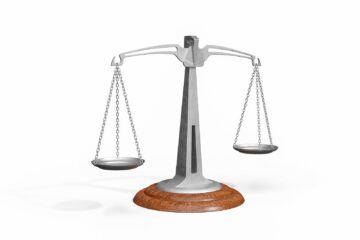![]()
INTRODUCTION
Indian administration for rural development is a three-tier structure system known as Panchayati Raj. This philosophy of Panchayati Raj is deeply rooted in the tradition and heritage of rural India and is not a new concept. This system has provided a manner of self-governance at the village level, however, it did not have a constitutional status initially. The prime objectives of the three-tier Panchayati Raj System are to curb poverty, uplift standard of living of people in the rural areas, and enhance a healthy and wealthy society by creating awareness among them about hygiene, sanitation, and eradication of illiteracy[1].

EVOLUTION OF PANCHAYATI RAJ
After independence to study the implementation of self-government at the rural level. Alsoto recommend steps in achieving this goal, there were various committees appointed by the Indian government. The first Balwant Rai Mehta Committee (1957) made a paramount contribution in this system and this being the reason Mr. Balwant Rai Mehta was credit for pioneering the concept the Panchayati Raj in India. Also known as Father of Panchayati Raj in India.
This committee is appoint to analyze and suggest democratic decentralization. Also better operation of the Community Development Program, and reconstruction of rural India. The Recommendation of the committee was to establish a democratic decentralized local government called Panchayati Raj. The Gram Panchayat, Panchayat Samiti and Zila Parishad as the three tiers of this system. Panchayat Samiti functions as an executive unit and Zila Parishad as a supervisory and advisory unit.
After Ashok Mehta Committee and G V K Rao Committee, the L N Singhvi Committee in 1986 recommend that the Panchayati Raj systems should be constitutionally recognize. And also recommend constitutional provisions to recognize free and fair elections for the Panchayati Raj systems. Finally 73rd Constitutional Amendment Act of 1992 was into the picture which gave constitutional status to Panchayati Raj.
THE THREE TIER SYSTEM
In the three-tier system the Gram Panchayat is at the third tier. Panchayat Samiti at second and Zila Parishad at the first tier. Nomenclature of Gram Panchayat, Panchayat Samiti and Zila Parishad may vary at different places like:
| Gram Panchayat | Village Panchayat, Gaon Panchayat |
| Panchayat Samiti | Gram Samiti |
| Janpad Panchayat (in Madhya Pradesh) | |
| Taluk Panchayat (in Gujrat) | |
| Panchayat Union (in Tamil Nadu) | |
| Zila Parishad | Mahukma Parishad (in Assam) |
| District Panchayat (in Gujrat) |
Gram Panchayat
In this construction of the Panchayati Raj, the Gram Panchayat is at the third tier. There is a Panchayat for every village or a group of villages. If the population of those villages happens to be too small. The Panchayat mainly consists of representatives elected by the people of the village. It also has provision for co-option of two women panchas and one member of the SC’s and ST’s. Provides they do not get sufficient representation in the ordinary course.
Only those persons who are registere as voters furthermore do not hold any office of profit under the government. They are eligible for election to the Panchayat. The persons convicted for criminal offenses by the court are precluded from the election of the Panchayat.
There is a general body of the village called Gram Sabha. To whom the Panchayat as a unit is responsible, which meets twice annually. The Panchayat has to present its financial plan, annual administrative previous year’s accounts to the Gram Sabha. Also, before enforcing the production plan, taxation proposals or development programs the Panchayat has to obtain Samiti is approval.
Every panchayat elect their President to call the Sarpanch and a vice president called Upsrpanch. Sarpanch occupies a focal position in panchayat is electe directly by Gram Sabha by the display of hands or through secret ballot. However in some state the elections conduct indirectly.
The Sarpanch by virtue of his post is an ex-officio member of the Panchayat Samiti. And takes part in its decision-making as well as in the election of the Pradhan. And the members of various Standing Committees. He is the executive head of the Panchayat, represents the Panchayat in the Samiti as its spokesperson. And coordinates its activities and those of other local institutions like cooperatives.
Officers at panchayat
There are two officers at the Panchayat level to assist the Sarpanch in administration. The Panchayat Secretary and the ‘Gram Sevak’ or Village Level Worker (now called Village Development Officer). The former aids the Panchayat in preparing budget estimates, recording decisions. Keeping minutes and doing other miscellaneous jobs like preparing notices, organizing meetings of Gram Sabha, etc. And the latter assists the Panchayat by drawing up production plans for agriculture. Helping farmers in securing loans for agriculture, arranging the supply of inputs like seeds and fertilizers. And educates farmers about modern agricultural practices. He acts as the chief connection between the Gram Panchayat and the Samiti.
He keeps the Panchayat updated regarding various development programs. And reports to the Panchayat Samiti about the progress of the schemes and accomplishment of targets. On the one hand he is responsible to the Sarpanch at the Panchayat level. On the other hand to the Block Development Officer and extension officers at the Samiti level.
Usually the funds of the panchayat are meager, so the appointment of Panchayat Secretary by the panchayat is on a part-time basis.
The Village Panchayats can impose certain cess and duties to cover their expenses for example tax on the house, animals, professions, vehicles, and vacant lands. The chief functions performed by the Gram Panchayat covers maintenance of roads, public health, well, schools, libraries, sanitation, community center, burning and burial ground, etc. The minor issues among the villagers are to be settle by the Village Panchayat. It also acts as the agent of the Panchayat Samiti in executing development schemes at the village level.
Panchayat Samiti
The Panchayat Samiti is the second tier in the framework of Panchayati Raj. The B. R. Mehta Committee (1957) report has envisaged the Samiti as a single representative and vigorous democratic institution to take charge of all aspects of development in rural areas.
Usually a Samiti consists of twenty to sixty villages depending on territorial area and population. Under a Panchayat Samiti, the average population is about eighty thousand varying from 35,000 to 1 Lakhs.
Generally, the Panchayat Samiti consists of-
- about 20 members who are electe by and among the Panches of all the Panchayats cover under the jurisdiction of Samiti;
- 2 women members and 1 member from the SC’s and ST’s each are to be co-opt, if they do not get adequate representation otherwise;
- 2 localities holding experience of administration and public life, which may be advantageous for rural development;
- representatives of the Co-operatives working within the jurisdiction of the block;
- one member elected by and from of each of the small municipality covered within the geographical limits of a block;
- the MLA’s and MP’s representing that area are to be taken as associate members.
President & BDO
The President of the Samiti is known as Pradhan. He is elect by an electoral college. The electoral college constitutes all members of the Panchayat Samiti and all the Panchas of the Gram Panchayat covered within the block area. Apart from Pradhan there is also elect an Up-pradhan. Panchayat Samiti meetings are preside over by Pradhan. He guides the various Panchayats in carrying out production programs and making plans.
He ensures the execution of resolution, decisions, and goals of the Samiti and its Standing Committees. It exercises administrative console over the Block Development Officer (BDO) (also called Vikas Adhikari) and his staff. He by virtue of his office as Pradhan is a member of the Zila Parishad and also ex- officio chairman of the Standing Committees of the Samiti.
Block Development Officer, is the Chief Executive Officer of the Panchayat Samiti and is responsible for implementing the resolutions of the Samiti and its Standing Committees. BDO draws up the budget of the Samiti and serves it before the Panchayat Samiti for the approval. He is also responsible to prepare and send to the Zila Parishad and State Government the annual repost of Panchayat Samiti. BDO is accountable to the Pradhan for his actions.
Function
It is the primary function of the Samiti is to co¬ordinate with the exercises of the different Panchayats. It is cover within its jurisdiction. The Panchayat Samiti supervises the work of the Panchayats and scrutinizes their budgets. The Samiti is charge with the responsibility of preparing. And implementing plans for the development of agriculture, fisheries, animal husbandry, cottage industries. Agriculture, rural health issues, etc.
Prima Facie it may seem that the Samiti enjoys extensive powers but it has no freedom in instituting special programs or development projects of its choice. It simply performs the directives of the State Government with respect to specific projects.
Zila Parishad
The Zila Parishad sits at the apex in this three-tier system of the Panchayati Raj. It consists of representatives from the Panchayat Samiti; all district level officers from various departments such as medical, agriculture, public health, engineering, education, and other development departments; all the MLA’s and MP’s representing a part or whole of the district.
Similar to Gram Panchayat and Samiti there is also a provision for special representation of women, members of SC, and ST provided they are not adequately represented in the ordinary course.
The Chairman of the Zila Parishad is elected from among the members of the Zila Parishad itself. There is a post of Chief Executive Officer in the Zila Parishad who is appointment is done by the State Government. There are also officers or specialists from different departments in every state at the district level for different development programs.
As Panchayat Samiti coordinates and supervises the functioning of the Village Panchayats falling in its jurisdiction likewise the Zilla Parishad functions of the supervisory and coordinating body over the actions of Panchayat Samitis covered under its jurisdiction.
For the execution of numerous development schemes at the district level the Zilla Parishad formation necessary advice to the government. Maintenance of schools (both primary and secondary) dispensaries, hospitals, minor irrigation issues etc. are responsibilities of Zila Parishad.
The funds of the Zilla Parishad are granted by the State Government and it also has share in the land tax and other local taxes. Often it has been permitted by the State Government to impose certain taxes or regulate the taxes previously required by the Panchayat Samitis to a specific cutoff.
CONCLUSION
Undoubtedly the government has made and is still making various efforts for betterment and upliftment of the rural India. The hierarchy of administration established in this three-tier framework of the Panchayati Raj system not only brings transparency in its working but also eases the way for its smooth functioning. Elevation of this largest democracy with around 65 percent of the rural population is a tedious task and at the same time it is challenging also because the orthodox population and their typical primitive mindset act as a hurdle. The program of ‘Open Defecation Free’ led by the government is a very appropriate example to quote.
Various cities and states have been labeled as ‘open defecation free’ but in practicality the practice is still in use. Brain-drain is also one major reason that rural areas do not develop. None of the educated mind shifts to the rural area and the rural population which gets educated moves to cities. Hence, this herculean job of rural India needs more strategies and tactics to bring in.
[1] Siva Subrahmanyam, K., Devolution of Functions and Finance on Panchayaties in Andhra Pradesh, Hyderabad: National Institute of Rural Development, 2003, p. 17.



0 Comments